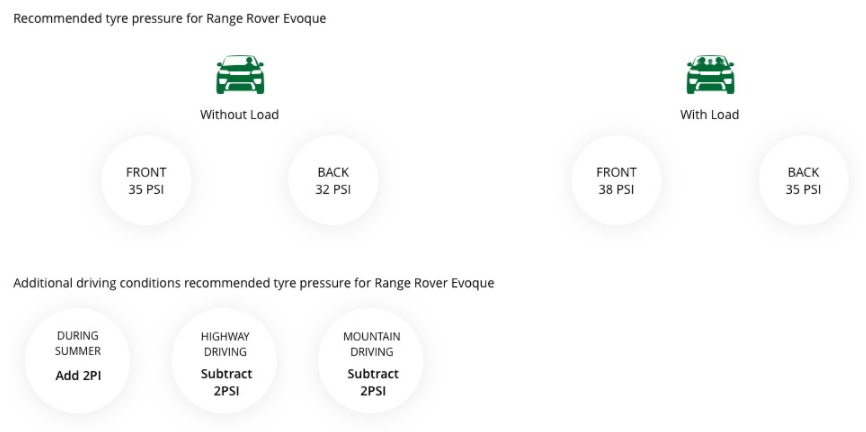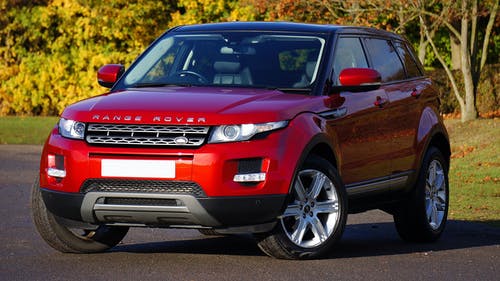What tire pressure is needed for a Range Rover Evoque?
Tire pressure is one of the most overlooked aspects when it comes to regular vehicle maintenance. Low tire pressure significantly increases the chances of a driver causing or being part of a road accident. Further issues such as excessive tire wear, poor vehicle handling, and reduced fuel economy are also causes of low, tired pressure.
Furthermore, pumping your tires up too much resulting in high tire pressure can result in:
- Poor braking
- Reduced traction
- Risk of a tire blowout
Regular tire maintenance will ensure your tires are kept within the correct tire pressure to ensure your Range Rover driving is efficient and as safe as possible.
The required type pressure for a Range Rover Evoque front tire is 32PSI, with the rear tire reading at 38 PSI. However, the Range Rover Evoque Vehicle comes in 6 variants with tire pressure fluctuations depending on the model. Below you can find the correct tire pressure for all four tires and the specific model.

Tire pressure with and with additional load
The tire pressure for the Range Rover Evoque further varies depending on whether there is a heavy load or not within the car. In addition, the tire pressure further changes depending on the type of driving you will be doing.

How to check your tire pressure
Checking your tire pressure does not need to be a stressful or tedious process. If you have the appropriate equipment, a pressure gauge, you can check all four of your tires in under 4 minutes. We would always recommend checking your tire pressure in the morning before driving. There is a high possibility that you will be given inaccurate pressure reading due to the tires being heated up from the drive.
As a general rule, your tire pressure for your Range Rover should sit between 32 PSI and 36 PSI. However, we would always advise you to check your owner’s manual to be entirely sure of the exact PSI number, as these can vary depending on the model of vehicle you have purchased.
If you have taken the time out to check your tire pressure, this would be an excellent opportunity to review the overall wellbeing of your tires. We would always advise you to check the tread of your tires now and again; if you believe the tire tread looks uneven, you may want to consider a tire rotation to maximize their life span. Additionally, if you notice the tire(s) are uneven, heavily worn, or even cracked, then we would advise you to invest in new tires immediately.
Is your TPMS light on?
If you have noticed your tire pressure monitoring system (TPMS) has lit up on your dashboard before you panic, there may be straightforward solutions. Changes in seasons, particularly in the winter months, your tires may lose a bit of pressure. The same concept applies in the warmer months; your tire pressure may increase slightly.
Always pump up your tires slowly. Ensure you have all four at the correct reading. Once each tire has been filled to the appropriate reading, we advise you to take a short slow drive around the block to reset your vehicles tires sensors. If the TPMS light is still visible on your Range Rover dashboard, we advise you to visit your nearest Rover Restoration and Repair Center for a professional inspection.

